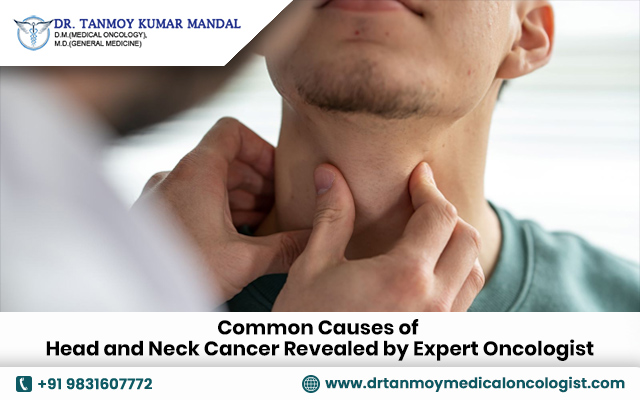Do you know that tobacco and alcohol can increase your risk of head and neck cancer? Of course, you can eliminate this risk with the right advice and lifestyle changes. Before that, let’s get to know about some of the other primary head and neck cancer causes from a leading oncologist in Kolkata, Dr. Tanmoy Mandal.
What is Head and Neck Cancer?
Head and neck cancer originates in the tissues of the head and neck area, including the mouth, throat, nasal cavity, and voice box. These cancers can develop in different parts of these regions and affect structures like the tongue, tonsils, and salivary glands.
Tobacco Use
Primary Cause: Tobacco use, whether smoking cigarettes, cigars, or pipes, is the leading cause of head and neck cancer. It contains carcinogens that can damage cells in the mouth, throat, and other areas, increasing the risk of cancer development.
Impact: The risk is significantly higher in long-term smokers or those who use smokeless tobacco products. Quitting smoking can reduce this risk over time.
Alcohol Consumption
Contributing Factor: Excessive alcohol consumption is another significant reason for head and neck cancer causes. Alcohol can damage the cells lining the mouth, throat, and oesophagus, making them more susceptible to cancerous changes.
Synergy with Tobacco: The risk of developing cancer increases substantially for individuals who both smoke and drink heavily compared to those who do either alone.
Human Papillomavirus (HPV) Infection
Emerging Cause: In recent years, HPV infection has become a recognized cause of specific head and neck cancers, particularly in the oropharynx (tonsils and base of the tongue).
Transmission and Impact: HPV, a sexually transmitted virus, can lead to persistent infection and changes in cells that increase cancer risk. Vaccination against HPV can reduce the likelihood of developing HPV-related cancers.
Prolonged Sun Exposure
Risk for Skin Cancer: Sun exposure, especially over many years without protection, can lead to skin cancers on the face, scalp, or neck. While not typically categorized as head and neck cancers, these cancers can affect similar areas and require prompt treatment.
Occupational Exposures
Workplace Hazards: Certain occupations involving exposure to asbestos, wood dust, nickel, and other chemicals or irritants can increase the risk of nasal and sinus cancers.
Protection and Prevention: Occupational safety measures and protective equipment are crucial in reducing exposure to these carcinogens.
Conclusion
Understanding the standard head and neck cancer causes empowers individuals to make informed choices that can reduce their risk. Whether it’s avoiding tobacco and excessive alcohol consumption, vaccinating against HPV, protecting oneself from occupational hazards, or maintaining good oral hygiene, these proactive steps can significantly lower the risk of developing these cancers.

